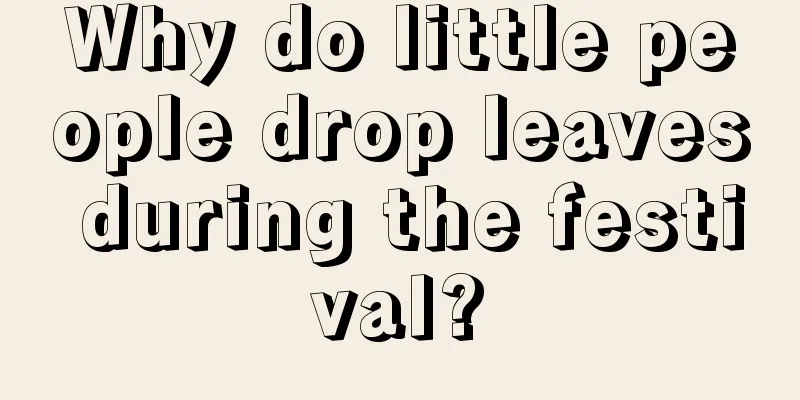Winter pruning method for cherry trees (pruning and management method for red light cherry trees)

How to Prune Cherry Trees in WinterThe Red Lantern Cherry is an excellent cherry variety newly cultivated in recent years. It is favored by people because of its large size, bright color, crystal clearness, thick flesh, sweet and juicy taste, and early maturity. The big red lantern cherry tree is a deciduous tree with wide leaves. Like other fruit trees, in order to ensure the quality of its fruit next year, people often prune it in late autumn, early winter or early spring before budding, which is called winter pruning . Its main purpose is to prevent diseases and insects, provide lighting and ventilation, optimize tree shape, and dwarf tree trunks. During winter pruning, fruit trees can be divided into trunkless and trunk-shaped shapes. Among them, the trunkless shape is further divided into multi-branch natural open heart shape and cup shape; the trunk shape is further divided into sparse layered shape, round head shape, cylindrical shape, spindle shape, etc. Because this cherry tree is a broad-leaved species with strong branching ability, it is recommended to prune it into a natural open-heart shape without a main trunk, a cup shape, a sparse and layered shape with a main trunk, a round-head shape with a main trunk, or a cylindrical shape with a main trunk. Of course, you can also prune according to the natural growth of the tree, as long as the light is evenly distributed and the tree is well ventilated. 1. No trunk pruningThe trunkless tree shape refers to the tree shape that leaves 3-4 side branches to grow around the trunk after the trunk is shortened to form a natural open-heart shape, cup shape or other shapes. This tree shape has the advantages of uniform light, equal growth of side branches, and easy picking and management. 1. Natural open heart shape without main trunkNatural open-heart pruning without a main trunk refers to shortening the main trunk of a young tree and cultivating 3 to 4 main branches to allow it to branch out in different directions. The tree shape cultivation is mainly completed through winter pruning every year. During winter pruning, in addition to removing the current year's branches at the base of the main trunk and main branches, you should also pay attention to reducing and slowly releasing the main branches to cultivate the skeleton and balance the tree's vigor. The advantages of this pruning method are uniform light distribution, good ventilation, easy picking, and less incidence of diseases and pests. 2. Cup shape without main stemThe cup shape without a main trunk refers to the tree shape in which the main trunk is shortened, the main and side branches are supplemented with pulling branches to open the angles, and then the main and side branches and secondary branches are cultivated. When pruning in winter, you can assist with branch pulling. First, open the angles of the main and side branches as much as possible; then appropriately prune the dense branches growing on the main and side branches; finally, cut off the strong and vigorous branches and overgrown branches that affect the shape of the tree. The advantages of this pruning method are uniform lighting, ventilation, susceptibility to pests and diseases, balanced growth of side branches, and a high fruit-bearing rate. 2. Main trunk pruning1. There is a main evacuation layered formThe main trunk and sparse layered shape refers to retaining the main trunk of the fruit tree, and then cultivating the main and side branches in a sparse and layered manner, so that it grows progressively upward. During winter pruning, except for the main and side branches that are cultivated as the focus, other branches grown in the current year on the main trunk need to be pruned off; diseased and weak branches, densely growing and overlapping branches, and cross branches on the main and side branches should also be thinned out; branches that are too long and too vigorous should be appropriately shortened. The advantage of this pruning method is that the light is evenly distributed, the trunk is strong, the life span is long, and the fruiting rate is high. However, it is important to pay attention to thinning in summer to avoid a closed crown and insufficient light . 2. Has a round head shapeThe main trunk round head shape refers to the method of retaining the main trunk of the fruit tree, allowing it to grow naturally, and then pruning the crown branches into a round crown shape by removing the weak and retaining the strong, thinning, and reducing. This pruning method is particularly suitable for pruning strong trees. When pruning in winter, first cut off the dry, diseased and weak branches on the cherry branches; then cut off the dense, crossed, parallel branches as well as the inner branches and the long branches; finally, shorten the overly long branches into a round crown shape. The advantage of this pruning method is that the trunk is shorter, there are more main branches and secondary branches, the crown is full, and it is easy to produce high yields. 3. With a cylindrical trunkA cylindrical tree with a main trunk means that there is a central main trunk with branches of similar lengths and angles growing at a certain distance from the trunk, making the tree look like a cylindrical shape. During winter pruning, it is advisable to cut off the current year's side branches on the main trunk between the cherry branch groups, and cut off the dry, diseased and weak branches and densely growing branches on the branch groups. At the same time, shorten the long branches to maintain the original length of the branch group, making it a regular cylindrical shape. This type of tree has similar lengths between branches and there is no obstruction or closure, so the light intake is better, the fruit shape is beautiful, and the fruit color is bright. It is particularly suitable as a horticultural fruit tree, which can be both appreciated and eaten . |
>>: Tips for Pruning Plums in Winter (Plum Tree Pruning Methods and Techniques in Winter)
Recommend
What to do if the white flower does not bloom
Estimation of flowering period of Psoralea coryli...
When is the best time to prune peppers?
Pruning of pepper Sichuan pepper can be pruned vi...
Corn planting time
my country's main corn producing areas are in...
What to do if the leaves of Schefflera variegated
1. Causes and solutions 1. Lighting It may have t...
How long does it take for grape cuttings to take root? The fastest way to root grape cuttings (with pictures)
Rooting time of grape cuttings Grape cuttings are...
How to prune the Clerodendrum thomsoniae
When to prune Clerodendrum Clerodendrum thomsonia...
Advantages and disadvantages of lilac roses
Lilac is native to the Netherlands. The flower ha...
Common Pests of Red Flowering Tree and Their Control
Aphid pest of red safflower Description of the co...
The difference between peony and peony
1. Difference of blades The leaves of peony are u...
Can honey water be used to water flowers? What flowers can be watered?
Can honey water be used to water flowers? Honey w...
Can cherry tomatoes be grown in pots?
Can cherry tomatoes be planted in flower pots? Ch...
What to do if banyan tree leaves turn yellow and fall off
1. Lighting and ventilation Reason: Insufficient ...
The highest yielding red bean variety in Northeast China Which red bean variety has the highest yield
Northeast red bean high-yield variety The yield o...
How to Make Wintersweet Bloom for Christmas
principle When some plants encounter a harsh envi...
How many years does it take for a dragon fruit tree to bear fruit?
How many years does it take for dragon fruit tree...









